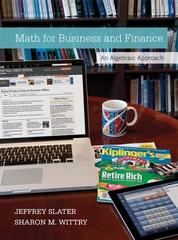


I am stuck, I can't find the correct answers please help
1.5} Suppose that costs are given by C = Q3(a1w1+ saw) for a shipper and that the input denoted by subscript 1 is transportation (w prices). What is the shipper's demand for Transportation? What is MC? 1(5) Suppose that you have a homogeneous production function given by: T=X'5Z'25. a.(3} What is the returns to scale? Are they increasing, decreasing or constant. Show the work to get from the production function to the returns to scale parameter. b.{2} ( Draw an AC function that is consistent with a) 3.(S} Suppose that an individual consumes transportation (T) and all other goods (G). Assume that the price of G is pg, the price of transportation is pt, and Y is income. a. (1) If this consumer spends all of her income on transportation, how much could she buy? b. (2) How much G could she buy if all of her income were spent on G? How would you answer this question if her income per period were $250, pg = $1 , and pt = $3.00. c. c. (2) With the use of indifference curves and budget lines, demonstrate that an increase in the price of transportation will reduce the household's consumption of transportation. Can we predict what will happen to a consumer's level of economic welfare? 4.(10) Wanting to vacation in Los Angeles, Tom, who lives in Kansas City, can take direct ights on either of two airlines. Flying time on Airline A is ta hours at a fare of fa dollars. Airline B offers a fare of fb dollars with a ying time of tb. Let the conditional indirect utility for airlines A and B respectively be A UA =Y-px+upA+ytA+BlY+.-5A A UB =Ypx+upB+?tB+|32Y +B is the price on airline A, p is the price on airline B, 1A where Y is income, px is the price of all other goods, p and BB represent unobseR'ed taste variations. ct, 7, [31, and t is travel times on airlines A and B respectively. 9 and lg are parameters. A a. (5)Tom's conditional indirect utility for airline A does not depend upon either the price or the travel time on airline B. Similarly, his conditional indirect utility for airline B does not depend upon the price or travel time on airline A. If Tom decides to y on airline A, does this decision imply that the price and travel time on airline B had no eect on Tom's choice of airline A? b. (5) If [31: [32, does Tom's conditional indirect utility depend upon his income? Would his choice of airline depend upon income? If so, why; if not, why not? 1 Static consumption-labor choice (30 points) Consider a one-period closed economy, i.e. the consumer lives for one period. He/She supplies labor, earns wage incomes and demands consumption goods. The government needs to finance an exogenous spending via distorting labor tax. That is to say, for each dollar of wage income the consumer earns, he/she needs to pay ~ fraction to the government. ~ here indicates the tax rate: a policy variable. In addition to the wage income, the consumers are also shareholders of the firms. So, he/she gets constant dividend payment before making decision. 1.1 Solve the consumer's consumption-labor choice problem, taking prices and government poli- cies as given (partial equilibrium). More specifically, consider the following optimization problem: max { c (1 - 1)1-7} (1) S.t. c= w(1 -T)lte (2) where c is the consumption and I denotes the labor service supplied. 0, what will happen? 1.2.2: If e = 0, what will happen? 1.2.3: If e












